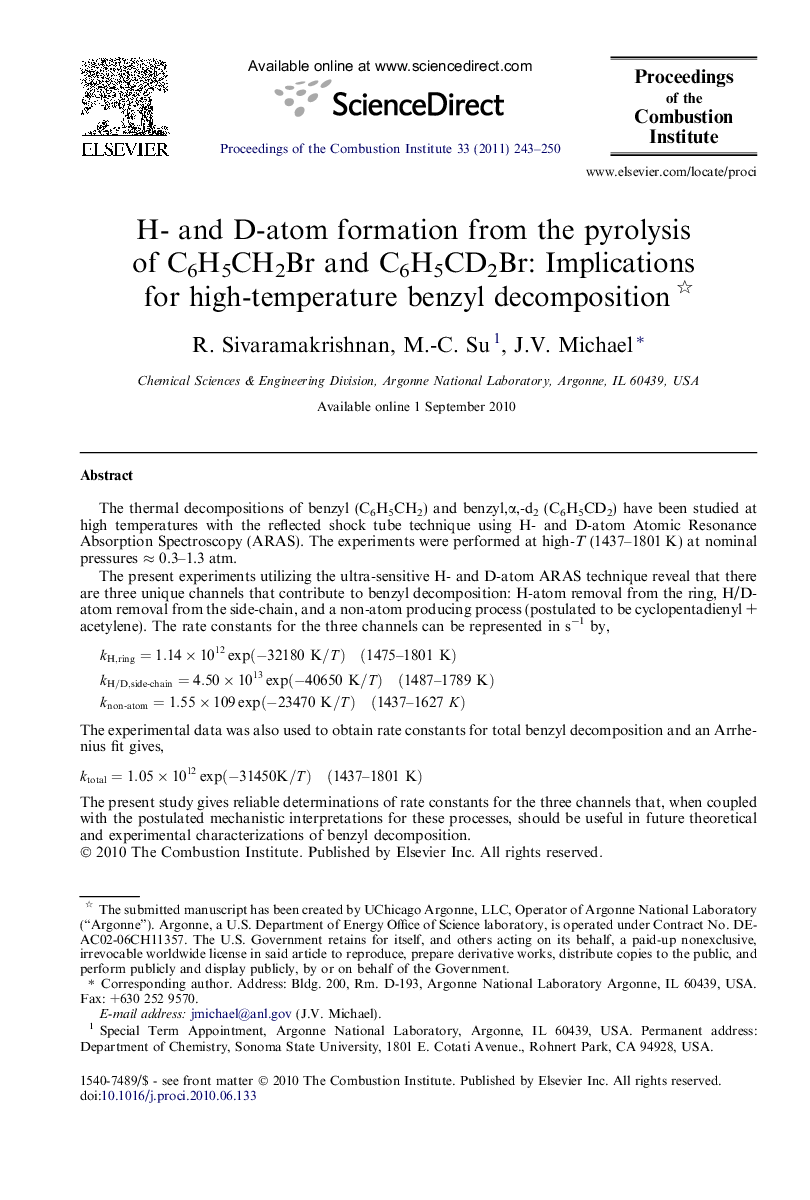| Article ID | Journal | Published Year | Pages | File Type |
|---|---|---|---|---|
| 241325 | Proceedings of the Combustion Institute | 2011 | 8 Pages |
The thermal decompositions of benzyl (C6H5CH2) and benzyl,α,ά-d2 (C6H5CD2) have been studied at high temperatures with the reflected shock tube technique using H- and D-atom Atomic Resonance Absorption Spectroscopy (ARAS). The experiments were performed at high-T (1437–1801 K) at nominal pressures ≈ 0.3–1.3 atm.The present experiments utilizing the ultra-sensitive H- and D-atom ARAS technique reveal that there are three unique channels that contribute to benzyl decomposition: H-atom removal from the ring, H/D-atom removal from the side-chain, and a non-atom producing process (postulated to be cyclopentadienyl + acetylene). The rate constants for the three channels can be represented in s−1 by, kH,ring=1.14×1012exp(-32180K/T)(1475–1801K)kH/D,side-chain=4.50×1013exp(-40650K/T)(1487–1789K)knon-atom=1.55×109exp(-23470K/T)(1437–1627K) The experimental data was also used to obtain rate constants for total benzyl decomposition and an Arrhenius fit gives, ktotal=1.05×1012exp(-31450K/T)(1437–1801K) The present study gives reliable determinations of rate constants for the three channels that, when coupled with the postulated mechanistic interpretations for these processes, should be useful in future theoretical and experimental characterizations of benzyl decomposition.
